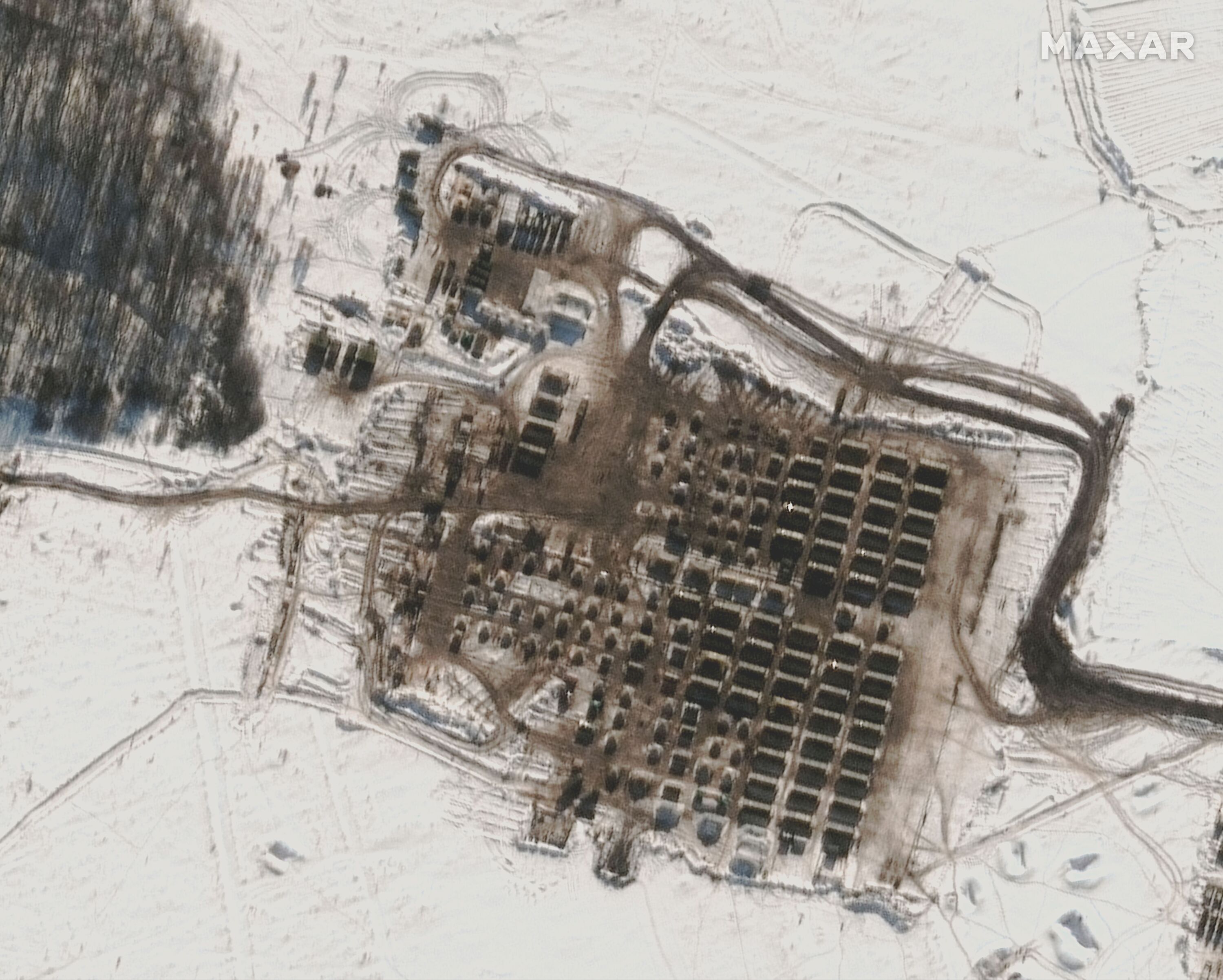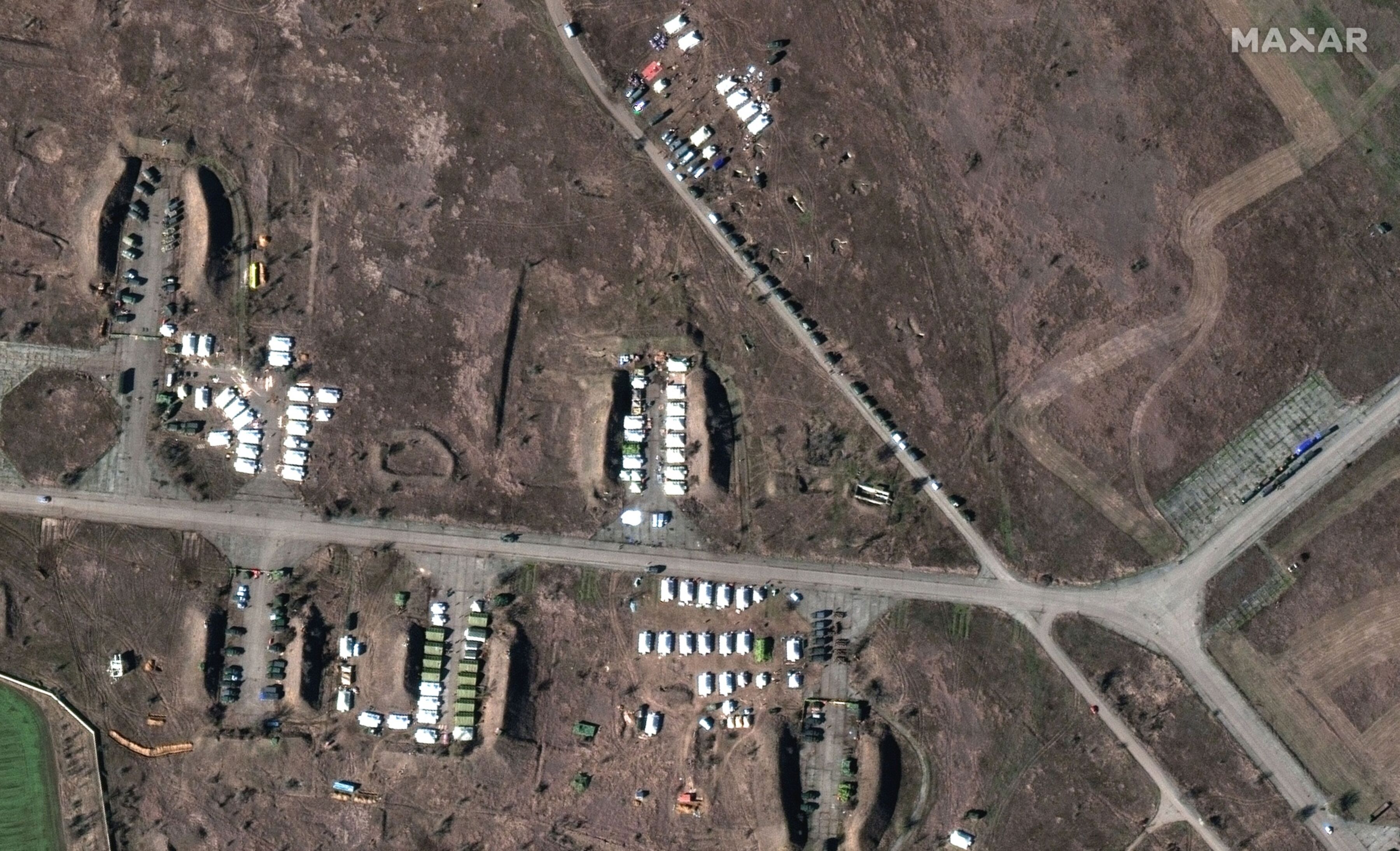
Where Military Forces Are Assembling Around Russia and Ukraine
U.S. intelligence suggests Russia may attack Ukraine as early as next week, before the Winter Olympics in Beijing end on Feb. 20, according to National Security Advisor Jake Sullivan. Russia denies it has any plans to invade. Still, the Pentagon is sending an additional 3,000 troops to Poland, according to a U.S. defense official, and President Biden has urged Americans to leave Ukraine as soon as possible.
Russia and Belarus are currently holding their biggest joint military drills in years. NATO Secretary General Jens Stoltenberg has said there may be 30,000 Russian troops in Belarus for the drills, which run to Feb. 20. Some of the exercises occur near the border with Ukraine, as well as near the borders of Poland and Lithuania, both NATO members. The U.S. and NATO estimate as many as 130,000 Russian troops are amassed near the Ukrainian border.
Russian Presence in Belarus

Russian military positions and
temporary sites
BELARUS
Minsk
RUSSIA
Gomel
Rechytsa
Zyabrovka airfield
is 15 miles (24 km)
from Ukraine’s border
Kyiv
100 mi
UKRAINE
100 km
▼ Troop housing area and battle group vehicle park at Rechytsa, Belarus on Feb. 9
▼ Armored vehicle deployments at the Zyabrovka airfield near Gomel in Belarus, on Feb. 10
The NATO military alliance is reinforcing its defensive presence in eastern member states—including in the Black Sea region—in response to the tensions over Ukraine, Stoltenberg said Friday. Russia has moved six landing ships to the Black Sea to join naval drills planned for Feb. 13-19.
Forces in Eastern Europe and Ukrainian Border

Russian military positions and
temporary sites
Locations of NATO troops
ESTONIA
More than
130,000
Russian troops
massed near
Ukraine border
4,000 NATO
troops led by
U.K., Canada
and Germany
LATVIA
Moscow
LITHUANIA
Minsk
RUSSIA
BELARUS
9,200
U.S. troops
POLAND
Kyiv
34,300
U.S. troops
205,000
Ukrainian
troops
Rebel controlled area
UKRAINE
GERMANY
Luhansk
Donetsk
1,900 U.S.
ROMANIA
6 Russian landing
ships undertaking drills
Black Sea
2,500 U.S.
200 mi
The Crimean Peninsula is Ukrainian territory annexed by Russia in 2014
BULGARIA
200 km
Russia denies any plans to invade Ukraine, saying the forces are on routine maneuvers. But it has warned Kyiv against making any military move against the separatist regions Moscow backs in the Donbas area. Russia also accused the U.S. and NATO allies of stoking tensions with naval exercises in the Black Sea. Ukraine denies it plans an assault.

Calling the alliance a threat, Russia has demanded binding security guarantees that NATO accept no more new members in Europe’s east, deploy no offensive weapons that Moscow sees as threatening and pull back its infrastructure to where it was in 1997, before the former Soviet allies and republics joined.
The U.S. and NATO have rejected those demands, saying the bloc is defensive, offering instead talks on limiting missile deployments and military maneuvers in the region.
The Soviet Union’s withdrawal from its eastern European satellite states after the 1989 fall of the Berlin Wall ended decades of Cold War military confrontation in Europe. Despite objections from Russia, NATO expanded in response to appeals from former Warsaw Pact members to be admitted into the military alliance and ensure Europe-wide security.
NATO Neighbors

Joined NATO:
Prior to 1999
Since 1999
Aspirant NATO member
Extent of Soviet Union and Warsaw Pact alliance, 1989
Atlantic
Ocean
EST.
RUSSIA
LAT.
LITH.
BELARUS
POLAND
GERMANY
CZECH
REP.
UKRAINE
SLOVAK.
HUN.
ROM.
BOS.
GEORGIA
Black Sea
BUL.
A NATO summit in April 2008 declared that membership is open to Ukraine and Georgia once they meet the necessary conditions, despite objections from Russian President Vladimir Putin. While neither has moved much closer to joining the alliance since then, Putin’s demands that they never do so is a main source of tension.
The U.S. is marshalling allies to threaten painful economic sanctions on Russia if it does invade Ukraine, but there is disagreement on how severe those measures should be. NATO members have also stepped up supplies of defensive weapons to Ukraine, whose army is much smaller and weaker than Russia’s. Though the U.S. has said it wouldn’t send troops to defend Ukraine, which isn’t in NATO, the Biden administration put as many as 8,500 soldiers on heightened alert for deployment to bolster alliance members in Eastern Europe if neede

Keine Kommentare:
Kommentar veröffentlichen